Yellow-billed Magpie (Pica nuttalli) photos by Larry Jordan
The Yellow-billed Magpie (Pica nuttalli) is a true California endemic species. They are found primarily in the Central Valley, the southern Coast Ranges, and the foothills of the Sierra Nevada where they prefer oak savannah habitat.
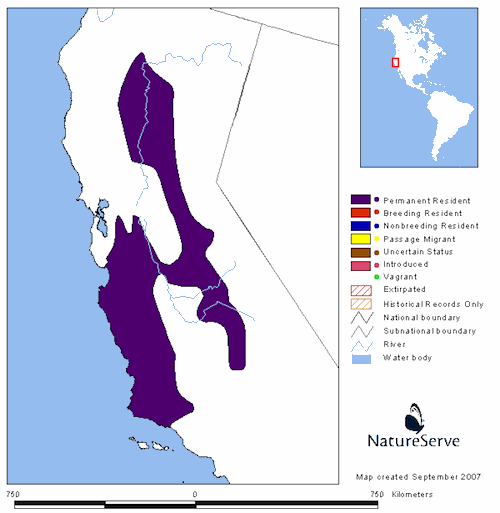
A member of the Corvidae family, Yellow-billed Magpies eat mostly ground dwelling invertebrates but will partake of carrion, and small mammals which they capture live. Foraging in oak savannah, in small flocks during breeding season and large flocks when not breeding, they will also eat acorns and other grains.
I found this flock of Yellow-billed Magpies in a place where they breed every year, right on Oak Run Road in a location that I pass every day on my way to work. Luckily for me, since these birds are non-migratory, they rarely move far from their nesting grounds. This bird is investigating a mound of earth, most likely pushed up by a gopher (click on photos for full sized images).
They appear mostly black and white, with a yellow bill and bare patch around the eye, but in the sunlight, the Yellow-billed Magpie has iridescent blue-green wings and tail, offset beautifully by their white scapulars.
The Yellow-billed Magpie is on Audubon’s watch list. Historically, loss of habitat due to oak savannah being converted for housing or agriculture, and poisoning programs aimed at the California ground squirrel, have caused declines in some populations and resulted in this species being extirpated from other locations1 (sounds frightfully similar to the current fate of the Western Burrowing Owl in California doesn’t it?).
West Nile Virus is also a major concern relating to the conservation of this species. Between 2004 and 2006, thousands of Yellow-billed Magpies were killed by the rapid onset of the virus. Studies showed that this rapid onset, combined with the highly social nature of the bird, means that entire colonies could have been wiped out very quickly.
Concerned about their status, beginning in 2009, Audubon California began a series of statewide surveys of the Yellow-billed Magpie to learn more about its population and breeding. These surveys are conducted by volunteers and reported on the online citizen science database, eBird. You can see the 2011 study report which includes a range map for the species here. Thankfully, it appears that these striking birds are rebounding from their past losses.
Whether sitting high atop a tree establishing a territory or laying on their side sunbathing they are fun to watch. Yellow-billed Magpies, like other corvids, being very social birds, interact with one another continuously. They will forage in large flocks and roost communally except during the Spring breeding season. They are also socially monogamous and pair bonds last many years, usually until one bird dies.
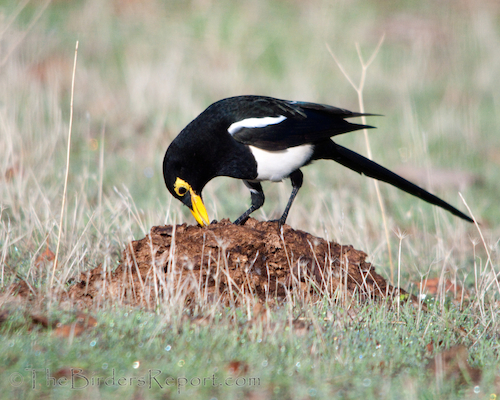
All of these attributes has apparently made them a favorite among bird lovers who voted the Yellow-billed Magpie Audubon California’s 2009 Bird of the Year!
This bird was part of a flock of around a dozen birds that was foraging in a pasture next to the road.
Like most corvids, the Yellow-billed Magpie is a curious and intelligent bird making them very entertaining.
In celebration of this California endemic, I leave you with this photo, courtesy of my bird loving friend Gail West (clicking on her photo will take you to her Flickr page), of a Yellow-billed Magpie in flight (something I have yet to acquire). It shows not only its beautiful form and color but the incredible pattern of the bird’s plumage that gives you the whole picture.
You can read more about the conservation status of the Yellow-billed Magpie and what you can do to help on this Audubon WatchList webpage.
To see more great bird photos, check out The Bird D’pot and Wild Bird Wednesday!
References: 1Audubon California Yellow-billed Magpie Survey


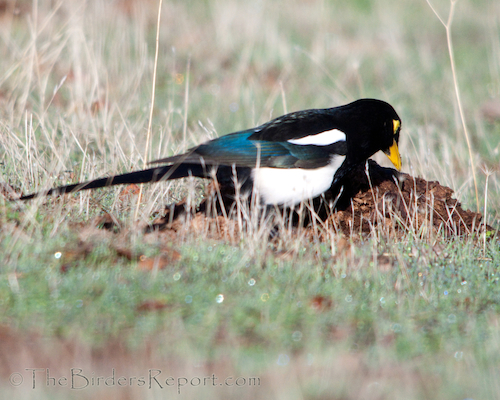
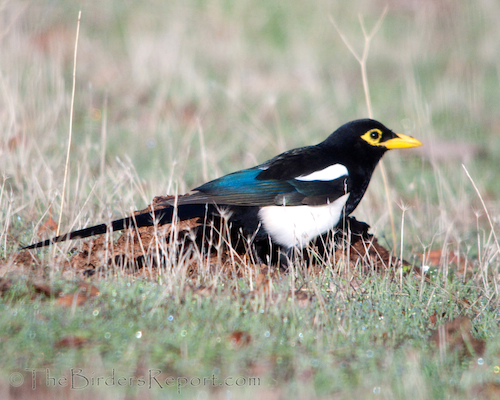
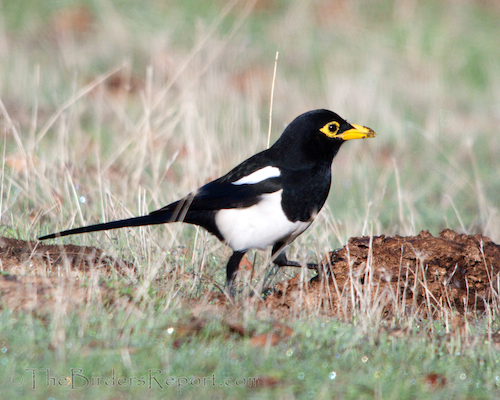
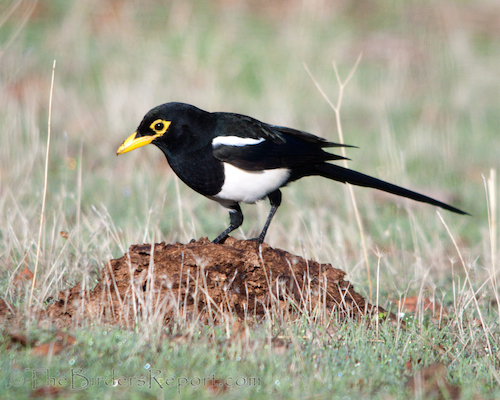
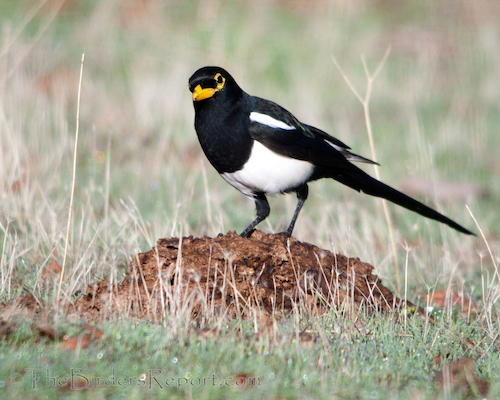
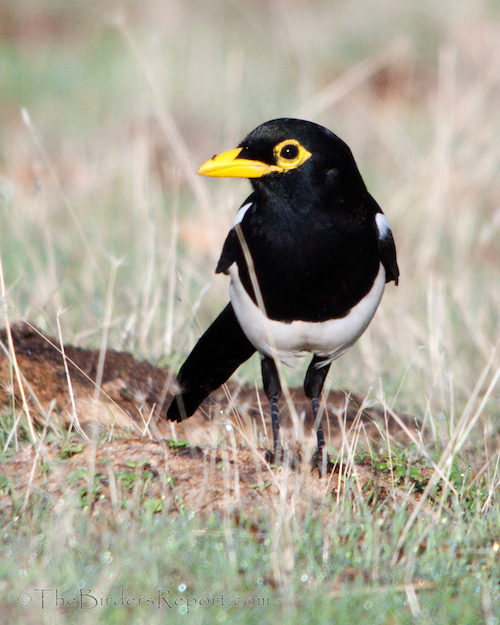
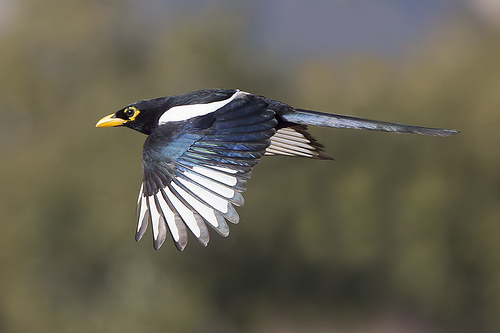








Comments on this entry are closed.
Wow…that is one incredibly beautiful magpie. When I lived in Colorado, we’d be graced with them in our own backyard….now, down this far south there just aren’t any. Of course not the yellow-billed ones either. LOL [That last image of your photos….simply GORGEOUS]
Larry….Thanks for the info on the Sharp Shinned and Cooper’s flight patterns. That’ll help me.
Thanks for linking up at the Bird D’Pot…much appreciated as always.
even eating poo, that is a gorgeous bird!
LOL @ TexWis! These are spectacular captures.
That third shot down had me admiring their lovely plumage and then your last shot came into view – just gorgeous!
Excellent capture Larry!
Love that last shot!
Very nice pictures of the mag-pie!
It differs from the one we see in Sweden.
Greetings Pia
beautiful bird; I’ve never heard of a yellow-billed one before and it’s wonderful to see. Lovely photographs too; thanks for sharing this beauty.
Larry, your Magpie is awesome. I love that pretty yellow beak. Great photos and post.
Great photos and very striking looking birds – rather different from what magpies here in Australia look like!
Great looking bird – it does look a lot like the European Magpies (but with more colour around the beak and head) I used to see in the UK.
As you can imagine, I was pretty happy when I found the hoopoe! More Omani lifers to come next week!
Cheers – Stewart M – Australia
great shots! Magpies sure are beautiful birds 🙂
Very informative article and outstanding images! Thank you.
Great photos!! Such a beautiful magpie with the yellow beak and around the eyes! /Susanne
OH Nice, I have never seen the Yellow Billed Magpies before, very cool looking bird!
What a gorgeous bird!
Beautiful captures of an awesome bird!